Crazyraceguy
Member
- Joined
- Oct 16, 2015
- Messages
- 5,559
The regular delivery driver has been off all week, so one of the project managers made a run to deliver a job that I built a few months ago. It has been sitting, since the site was not ready for it.
Apparently the thing made it all the way to the site, yet somehow it got chipped on the exposed seam, during the unload process. Since it is the joining seam of a 2 part unit, they had to bring both halves back, for the repair. That is where the real malfunction came in. It wasn't tied down well enough.
This caused it to bash into the front wall of the box truck. Much more damage resulted. The part that was un-damaged, going back into the truck, got it that time. The original damage could have been peeled and replaced fairly easily, with only one piece of laminate (less than 1/2 a sheet)
Smashing the corner, of the finished end, however, turned this into a 10+ hour situation and required an entire 5 x 12 and a 4 x 8 sheet. It went from a simple R&R of 1 piece, to 7 and a lot more material.
This took over 10 hours to fix something that I only spent less than 15 hours to build, in the first place.
I was off on Monday, when this happened, and it was the first thing I saw coming in the door Tuesday morning. Rather disappointing [unsure]
I had another emergency to deal with first, didn't start it until yesterday, finished before noon today.
Apparently the thing made it all the way to the site, yet somehow it got chipped on the exposed seam, during the unload process. Since it is the joining seam of a 2 part unit, they had to bring both halves back, for the repair. That is where the real malfunction came in. It wasn't tied down well enough.
This caused it to bash into the front wall of the box truck. Much more damage resulted. The part that was un-damaged, going back into the truck, got it that time. The original damage could have been peeled and replaced fairly easily, with only one piece of laminate (less than 1/2 a sheet)
Smashing the corner, of the finished end, however, turned this into a 10+ hour situation and required an entire 5 x 12 and a 4 x 8 sheet. It went from a simple R&R of 1 piece, to 7 and a lot more material.
This took over 10 hours to fix something that I only spent less than 15 hours to build, in the first place.
I was off on Monday, when this happened, and it was the first thing I saw coming in the door Tuesday morning. Rather disappointing [unsure]
I had another emergency to deal with first, didn't start it until yesterday, finished before noon today.
Attachments
-
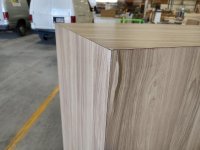 Circ bookcase smash.jpg157.3 KB · Views: 254
Circ bookcase smash.jpg157.3 KB · Views: 254 -
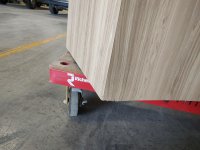 Circ bookcase damage.jpg210.1 KB · Views: 185
Circ bookcase damage.jpg210.1 KB · Views: 185 -
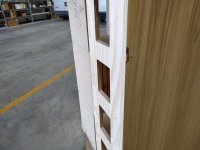 Circ bookcase chips.jpg186.2 KB · Views: 184
Circ bookcase chips.jpg186.2 KB · Views: 184 -
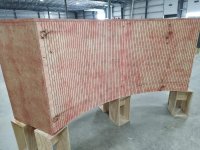 Circ stripped.jpg251.5 KB · Views: 196
Circ stripped.jpg251.5 KB · Views: 196 -
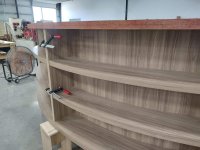 Circ stripped edge.jpg153 KB · Views: 165
Circ stripped edge.jpg153 KB · Views: 165 -
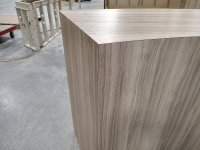 Circ fixed corner.jpg170.3 KB · Views: 140
Circ fixed corner.jpg170.3 KB · Views: 140 -
 Circ fixed.jpg198.5 KB · Views: 153
Circ fixed.jpg198.5 KB · Views: 153 -
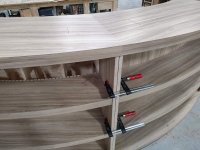 Circ fixed 2.jpg189 KB · Views: 142
Circ fixed 2.jpg189 KB · Views: 142 -
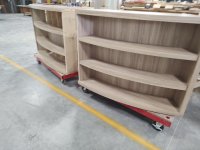 Circ fixed 3.jpg158.4 KB · Views: 168
Circ fixed 3.jpg158.4 KB · Views: 168
